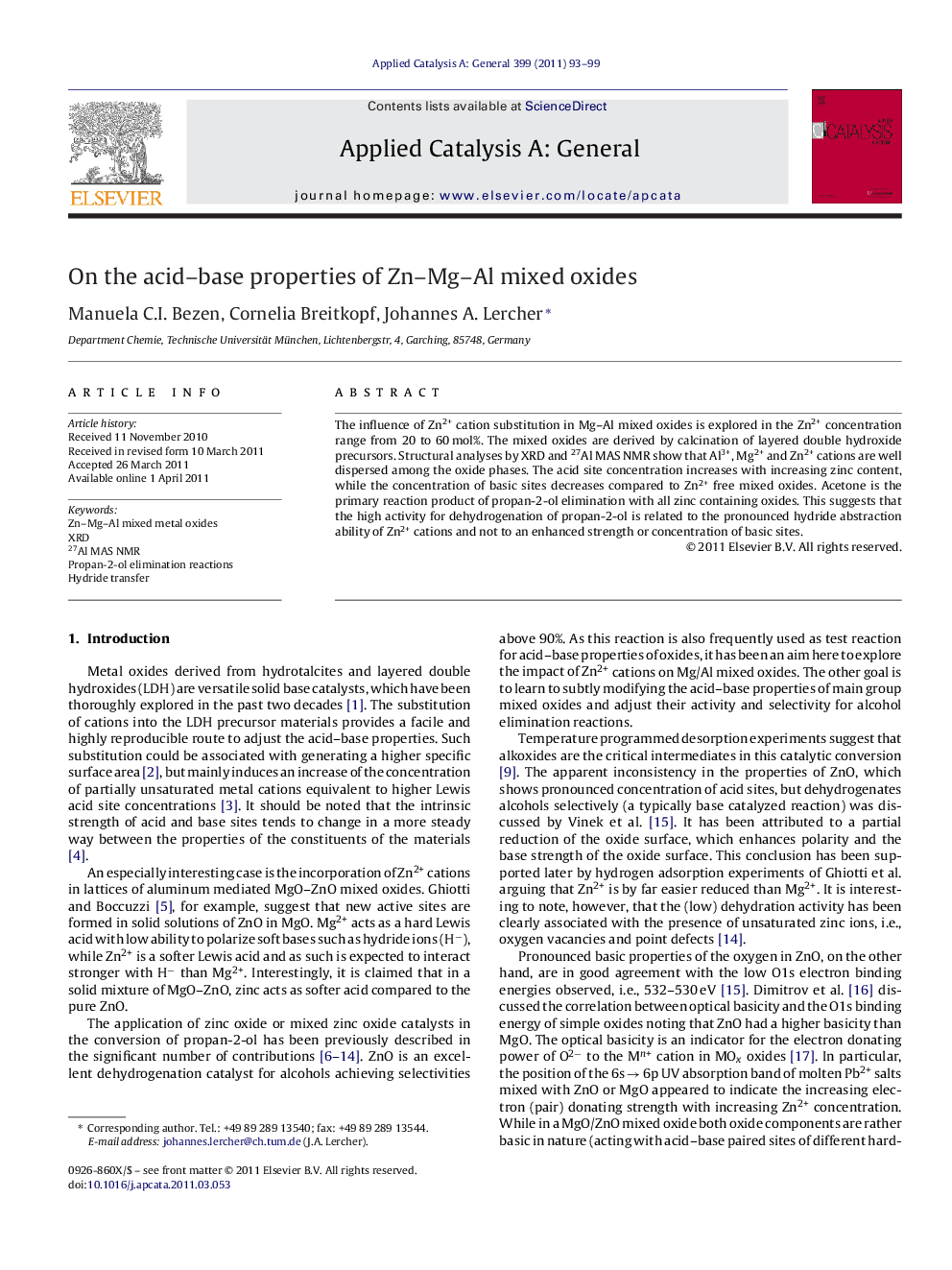| Article ID | Journal | Published Year | Pages | File Type |
|---|---|---|---|---|
| 41433 | Applied Catalysis A: General | 2011 | 7 Pages |
The influence of Zn2+ cation substitution in Mg–Al mixed oxides is explored in the Zn2+ concentration range from 20 to 60 mol%. The mixed oxides are derived by calcination of layered double hydroxide precursors. Structural analyses by XRD and 27Al MAS NMR show that Al3+, Mg2+ and Zn2+ cations are well dispersed among the oxide phases. The acid site concentration increases with increasing zinc content, while the concentration of basic sites decreases compared to Zn2+ free mixed oxides. Acetone is the primary reaction product of propan-2-ol elimination with all zinc containing oxides. This suggests that the high activity for dehydrogenation of propan-2-ol is related to the pronounced hydride abstraction ability of Zn2+ cations and not to an enhanced strength or concentration of basic sites.
Graphical abstractFigure optionsDownload full-size imageDownload high-quality image (147 K)Download as PowerPoint slideHighlights► Zn2+ cation substitution in Mg–Al mixed oxides induces a higher concentration of Lewis acid sites. ► High activity for dehydrogenation of propan-2-ol is related to the pronounced hydride abstraction ability of Zn2+ cations. ► Strength and concentration of basic sites decreases by substitution of Zn2+ cations in Mg–Al mixed oxides.
